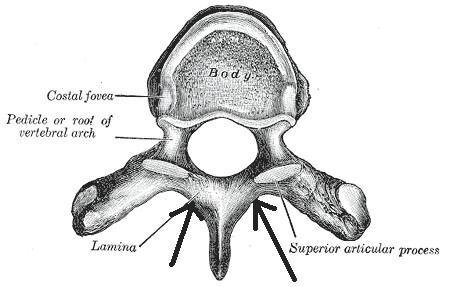Laminectomy
LAMINECTOMY
Laminectomy, also known as an open decompression, removes the portion of the vertebral bone called the lamina. The procedure enlarges the spinal canal to relieve pressure on the spinal cord and relieve irritation and inflammation of the spinal nerves. Laminectomy is performed to alleviate the symptoms that result from pinching of the spinal nerves including numbness, pain, and fatigue.
Lamina: The broad plate on either side of the spine that, together with the pedicles for, the roof of the vertebral arch.
Spinal stenosis is the degenerative condition that narrows the spinal canal and leads to pinched nerves. It is the most common cause of back surgery.
A lumbar laminectomy is performed when the diseased disc are in the lumbar portion of the spine–L1-L5. When the pinching occurs in the cervical spine–C3-C6–the procedure is called a cervical laminectomy.
SYMPTOMS
Spinal stenosis: a condition in which the spinal canal narrows causing nerve impingement
How does a Laminectomy work?
A two-inch to five-inch long incision is made in the midline of the back and the left and right back muscles are pushed off the lamina and to the side. The lamina is removed exposing the nerve roots. The facet joints which are directly over the nerve roots may then be undercut (trimmed) to give the nerve roots more room.
Try watching this video on www.youtube.com, or enable JavaScript if it is disabled in your browser.

